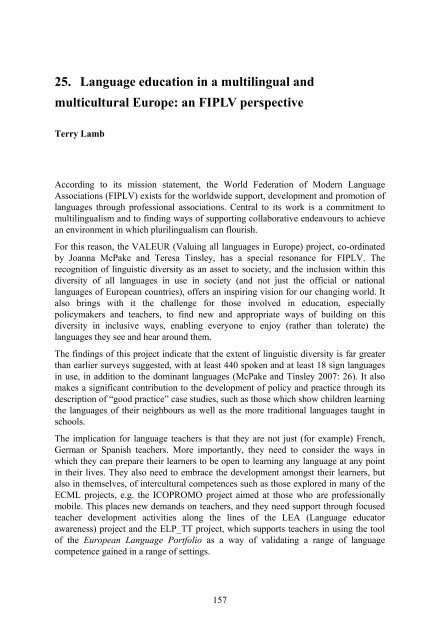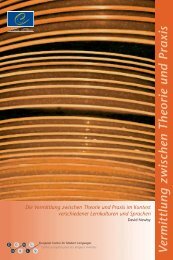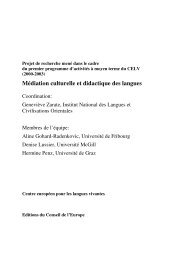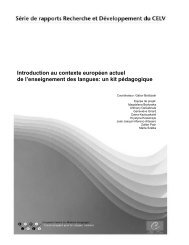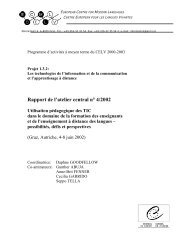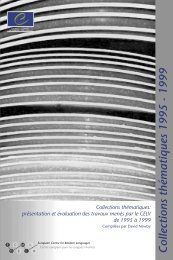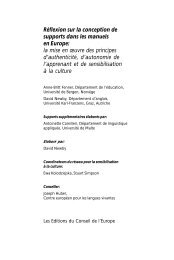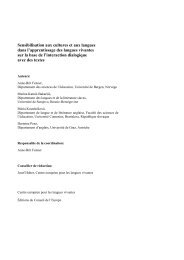cohesion - European Centre for Modern Languages
cohesion - European Centre for Modern Languages
cohesion - European Centre for Modern Languages
Create successful ePaper yourself
Turn your PDF publications into a flip-book with our unique Google optimized e-Paper software.
25. Language education in a multilingual and<br />
multicultural Europe: an FIPLV perspective<br />
Terry Lamb<br />
According to its mission statement, the World Federation of <strong>Modern</strong> Language<br />
Associations (FIPLV) exists <strong>for</strong> the worldwide support, development and promotion of<br />
languages through professional associations. Central to its work is a commitment to<br />
multilingualism and to finding ways of supporting collaborative endeavours to achieve<br />
an environment in which plurilingualism can flourish.<br />
For this reason, the VALEUR (Valuing all languages in Europe) project, co-ordinated<br />
by Joanna McPake and Teresa Tinsley, has a special resonance <strong>for</strong> FIPLV. The<br />
recognition of linguistic diversity as an asset to society, and the inclusion within this<br />
diversity of all languages in use in society (and not just the official or national<br />
languages of <strong>European</strong> countries), offers an inspiring vision <strong>for</strong> our changing world. It<br />
also brings with it the challenge <strong>for</strong> those involved in education, especially<br />
policymakers and teachers, to find new and appropriate ways of building on this<br />
diversity in inclusive ways, enabling everyone to enjoy (rather than tolerate) the<br />
languages they see and hear around them.<br />
The findings of this project indicate that the extent of linguistic diversity is far greater<br />
than earlier surveys suggested, with at least 440 spoken and at least 18 sign languages<br />
in use, in addition to the dominant languages (McPake and Tinsley 2007: 26). It also<br />
makes a significant contribution to the development of policy and practice through its<br />
description of “good practice” case studies, such as those which show children learning<br />
the languages of their neighbours as well as the more traditional languages taught in<br />
schools.<br />
The implication <strong>for</strong> language teachers is that they are not just (<strong>for</strong> example) French,<br />
German or Spanish teachers. More importantly, they need to consider the ways in<br />
which they can prepare their learners to be open to learning any language at any point<br />
in their lives. They also need to embrace the development amongst their learners, but<br />
also in themselves, of intercultural competences such as those explored in many of the<br />
ECML projects, e.g. the ICOPROMO project aimed at those who are professionally<br />
mobile. This places new demands on teachers, and they need support through focused<br />
teacher development activities along the lines of the LEA (Language educator<br />
awareness) project and the ELP_TT project, which supports teachers in using the tool<br />
of the <strong>European</strong> Language Portfolio as a way of validating a range of language<br />
competence gained in a range of settings.<br />
157


